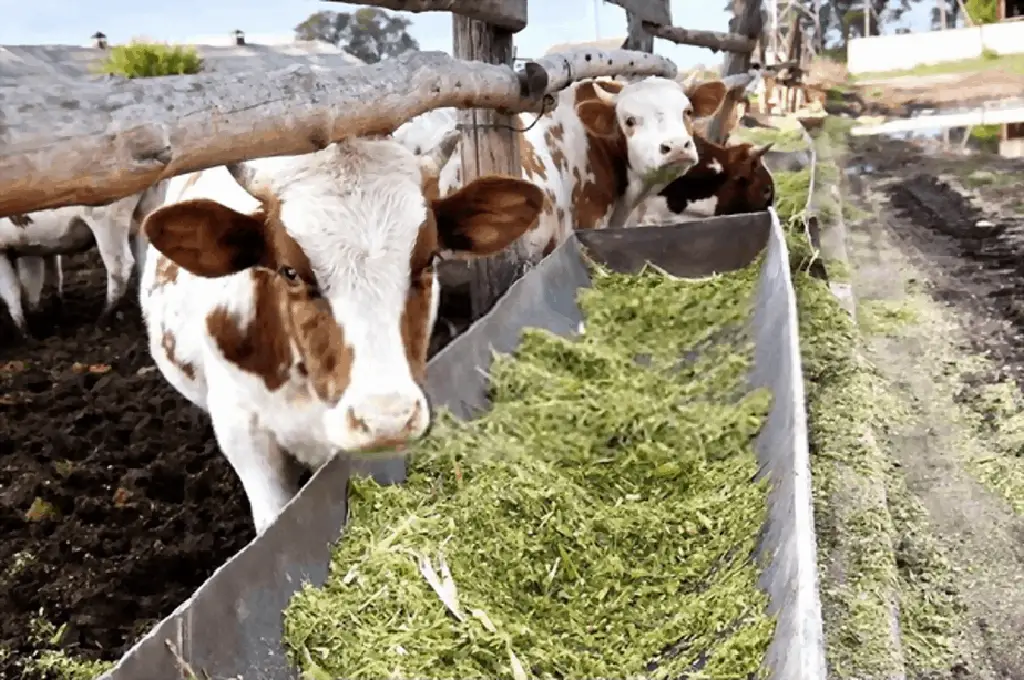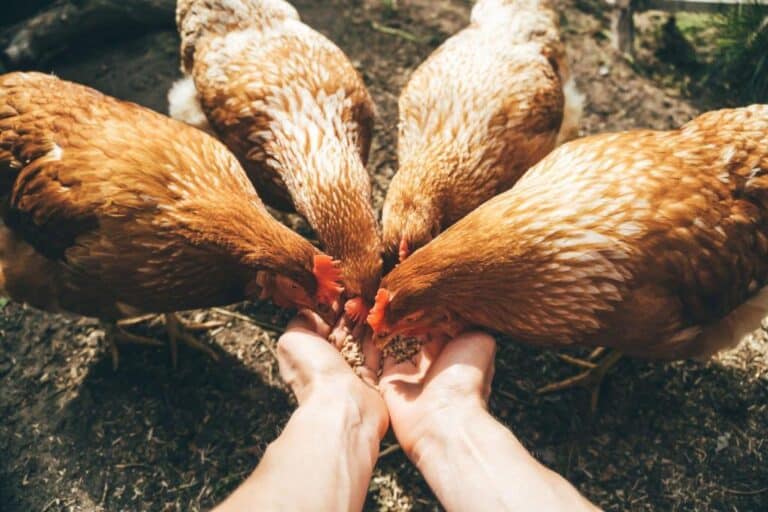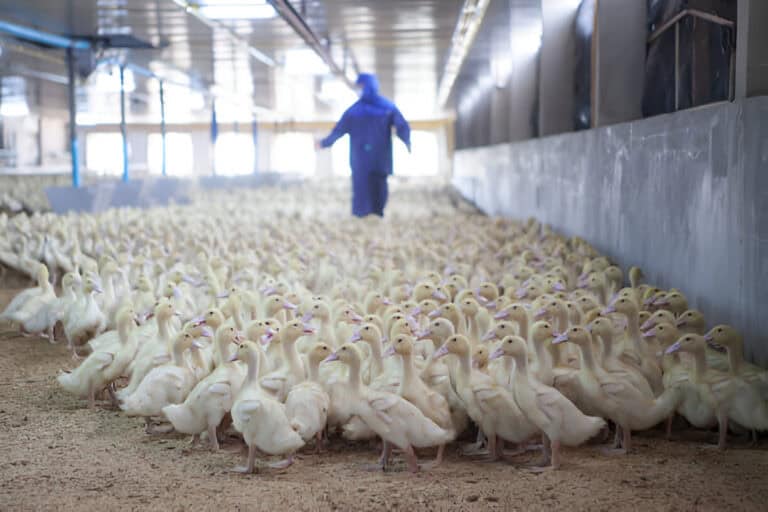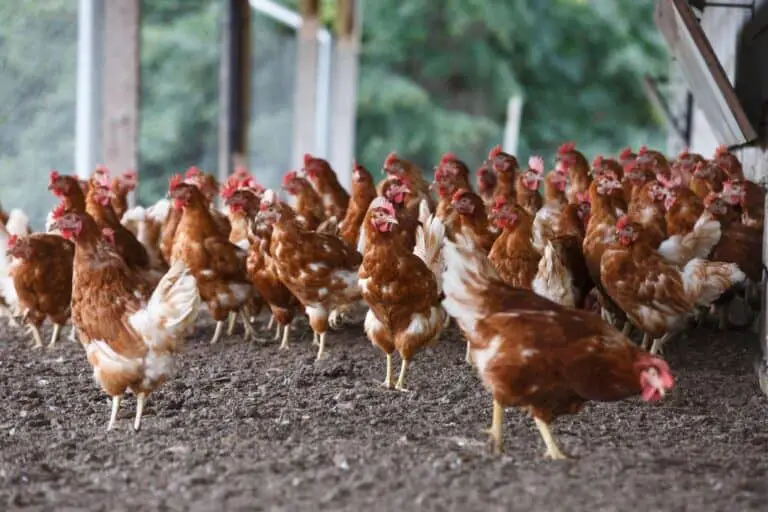The Benefits of Feeding Corn Silage to Beef Cows: Growth & Performance

Welcome to a fascinating exploration of the remarkable benefits that corn silage brings to the world of beef cow nutrition. When it comes to raising healthy and robust cattle, the right feed plays a crucial role in their growth and overall performance.
Among the various options available, corn silage has been gaining widespread popularity among farmers for its exceptional qualities. Derived from whole corn plants that are carefully chopped and fermented, corn silage packs a punch when it comes to enhancing the growth and performance of beef cows.
In this article, we will delve into the enticing advantages of incorporating corn silage into the diets of beef cows, focusing specifically on how it propels their growth and unlocks their potential.
Get ready to discover the nutrient-rich goodness, improved digestibility, and cost-effectiveness that make corn silage a game-changer in the world of cattle nutrition. Let’s embark on this enlightening journey to understand the remarkable impact of corn silage on the growth and performance of beef cows.
Introduction to Corn Silage
Corn silage, a staple in the world of animal nutrition, stands as a testament to the harmonious alliance between agriculture and science. Derived from the lush and towering maize plant, corn silage embodies a unique form of preserved sustenance that feeds the voracious appetite of livestock.
At its core, corn silage represents an ingenious method of preserving corn for year-round consumption. It begins with the harvesting of the corn plant at its peak of ripeness, when the kernels are plump and brimming with life-sustaining energy. The harvested plants, their vibrant green leaves rustling in the breeze, are skillfully ensiled—a process that marries art and science in the pursuit of perfection.
To create corn silage, the corn plants are first chopped into uniform pieces, allowing for optimal compaction and preservation. This finely diced corn is then meticulously packed into large silos, with the air pressed out to create an anaerobic environment—an oasis of preservation where time stands still. The silos, towering giants on the landscape, lock away the harvest’s vibrant hues and flavors, encapsulating them in an otherworldly realm.
Within these silos, nature’s magic unfolds. The anaerobic environment prompts the growth of lactic acid bacteria, which transform the sugars within the corn into lactic acid. As this fermentation process ensues, the acidity of the silage drops, creating an inhospitable environment for spoilage-causing organisms. A symphony of microbial activity dances in the silo, a harmonious collaboration that ultimately preserves the corn’s nutritional integrity.
When the moment of feeding arrives, the silos yield their treasure. The golden corn silage, carefully extracted from its sanctuary, becomes a vital source of sustenance for livestock. The animals relish in its taste, savoring the flavors of summer even in the harshest of winters. The corn silage, enriched with vitamins, minerals, and energy, fuels their growth and health, empowering them to thrive amidst the challenges of the farm.
The Benefits of Feeding Corn Silage to Beef Cows: Growth & Performance
1. Nutrient-Rich Feed Option
Corn silage is a highly nutritious feed option for beef cows. It contains a balanced combination of energy, protein, and fiber that is essential for their optimal growth and development.
With a moisture content ranging from 60 to 70 percent, corn silage provides a consistent source of water for cattle, reducing the risk of dehydration. It also serves as an excellent source of digestible energy, promoting weight gain and overall body condition.
| Nutrient | Content (per 100 kg) |
| Dry Matter | 30-40 kg |
| Crude Protein | 7-9 kg |
| Crude Fiber | 4-5 kg |
| Energy (TDN) | 70-75% |
| Calcium (Ca) | 0.15-0.25 kg |
| Phosphorus (P) | 0.18-0.25 kg |
| Potassium (K) | 0.8-1.2 kg |
| Magnesium (Mg) | 0.1-0.2 kg |
| Vitamin A (IU) | 20,000-30,000 IU |
| Vitamin E (IU) | 10-15 IU |
2. Enhanced Growth and Weight Gain
Feeding corn silage to beef cows has been shown to significantly enhance their growth and weight gain. The high energy content of corn silage provides a readily available source of calories, allowing the animals to efficiently convert feed into muscle mass. T
his leads to improved body condition and increased market value for the cattle. Additionally, corn silage’s optimal combination of protein and fiber helps support muscle development and overall growth.
3. Improved Digestibility
Corn silage is highly digestible, making it an excellent choice for beef cow nutrition. The fermentation process that occurs during the ensiling of corn enhances its digestibility by breaking down complex carbohydrates into more easily absorbed forms. This allows the cattle to extract more nutrients from the feed, resulting in improved feed efficiency and better utilization of the dietary components.
4. Cost-Effective Feed Option
Using corn silage as a feed option for beef cows can be cost-effective for farmers. Corn silage production often relies on locally grown crops, reducing transportation costs and ensuring a steady supply of feed. Additionally, corn silage can be stored for extended periods without significant loss of quality, making it an ideal choice for seasonal variations in feed availability. Its high nutrient content also reduces the need for additional supplements, further contributing to cost savings.
5. Reduction in Digestive Disorders
Digestive disorders, such as acidosis, can be a significant concern in beef cattle feeding. However, corn silage can help mitigate these issues. The fibrous nature of corn silage provides a buffer in the rumen, maintaining a more stable pH level and reducing the risk of acidosis. The high moisture content of corn silage also helps prevent dry matter intake fluctuations, which can contribute to digestive problems.
6. Environmental Benefits
In addition to its advantages for cattle, feeding corn silage offers environmental benefits. The production of corn silage utilizes the entire corn plant, reducing waste and maximizing resource utilization. By using corn silage as a feed option, farmers can minimize the amount of corn crop residue left in the field, which helps improve soil health and reduces the risk of erosion. Furthermore, the fermentation process involved in corn silage production produces organic matter that can be returned to the soil, enhancing its fertility and reducing the need for chemical fertilizers.
7. Versatility in Feeding Programs
Corn silage can be easily incorporated into various feeding programs for beef cows. It can serve as a primary forage source or be used in combination with other feeds to create a well-balanced diet. Its versatility allows farmers to adjust the proportion of corn silage in the ration based on the nutritional needs of their cattle, ensuring optimal growth and performance. Whether used during the growing phase or as a finishing feed, corn silage provides flexibility in feeding strategies.
8. Increased Palatability
Cattle tend to find corn silage highly palatable, thanks to its natural sweetness and texture. The combination of fermentable sugars and fiber in corn silage creates a desirable taste and mouthfeel for the animals. This palatability factor can be particularly beneficial when introducing new feeds or transitioning cattle to different diets. By enticing the cattle to consume their feed willingly, corn silage helps ensure adequate nutrient intake and promotes overall feed efficiency.
9. Sustainable Feed Option
With an increasing focus on sustainability in agriculture, corn silage stands out as a sustainable feed option for beef cows. Its production utilizes locally sourced crops, reducing the carbon footprint associated with long-distance transportation. Additionally, the fermentation process during ensiling reduces methane emissions, which are a significant contributor to greenhouse gas emissions in livestock production. By incorporating corn silage into their feeding programs, farmers can contribute to sustainable farming practices.
Harvesting and Storage Corn Silage
To maximize the benefits of corn silage , proper harvesting and storage practices are essential. When harvesting corn silage, it is crucial to cut the plants at the optimal maturity stage to ensure the right nutrient composition. The chopped corn plants should then be quickly ensiled in a silo to preserve the feed’s quality.
Factors such as moisture content, chop length, and compaction play a crucial role in fermentation and preservation. Ensuring the correct moisture level during ensiling and achieving proper compaction of the silage can help prevent spoilage and maintain nutritional integrity.
Different storage options, such as bunker silos, silage bags, or upright silos, can be utilized based on the specific needs and capacity of the operation. It is important to consider the availability of equipment and resources when selecting the appropriate storage method.
How Much Corn Silage Should I Feed My Beef Cows?
Determining the appropriate amount of corn silage to feed your beef cows is crucial for their nutritional well-being and overall performance. The quantity of corn silage required varies depending on several factors, including the animal’s weight, stage of production, desired growth rate, and the composition of the total diet. Striking the right balance ensures that your cows receive optimal nutrition without the risk of overfeeding or undernourishment.
To begin, consider the weight and body condition of your beef cows. A general guideline is to provide approximately 2-3% of the animal’s body weight in corn silage daily. This range accounts for variations in metabolic rates and individual appetites. For example, a 1,200-pound cow would typically require 24-36 pounds of corn silage per day. It is important to note that this estimation is based solely on corn silage and does not account for other feed ingredients in the diet.
Next, assess the stage of production of your beef cows. Different physiological stages have distinct nutritional requirements. For instance, gestating cows have lower energy needs compared to lactating cows or growing heifers. Adjust the amount of corn silage accordingly, ensuring that the diet meets the specific demands of each stage. It is advisable to consult with a nutritionist or veterinarian to determine the appropriate feeding regimen based on your cows’ specific needs.
Consider the desired growth rate and body condition goals for your beef cows. If your objective is to achieve moderate weight gain, you may need to adjust the amount of corn silage accordingly. Increasing the corn silage portion of the diet can provide additional energy for growth, but it is crucial to strike a balance to avoid excessive weight gain or potential health issues.
The composition of the total diet also influences the amount of corn silage needed. If corn silage serves as the sole forage source, a higher percentage of the diet should consist of corn silage. On the other hand, if the diet includes other forages or concentrates, the corn silage portion can be adjusted accordingly. It is important to maintain a balanced diet that meets the nutritional requirements of your beef cows, ensuring they receive adequate amounts of protein, minerals, and vitamins in addition to energy from corn silage.
Regular monitoring of your beef cows’ body condition, weight gain, and overall health is crucial to fine-tuning their corn silage intake. Keep a keen eye on their performance and make adjustments as needed. Remember that individual animals within a group may have different appetites and metabolic rates, so observe and adjust feed quantities accordingly to meet their specific needs.
Conclusion
In conclusion, feeding corn silage to beef cows offers a range of benefits, particularly in terms of growth and performance. With its nutrient-rich composition, enhanced digestibility, and versatility in feeding programs, corn silage provides a balanced and cost-effective feed option for cattle. It promotes optimal growth, weight gain, and muscle development while reducing the risk of digestive disorders. Furthermore, the environmental and sustainable advantages of corn silage make it a valuable choice for modern beef cow farming. Consider integrating corn silage into your cattle feeding program to unlock its numerous benefits and maximize the potential of your herd.






